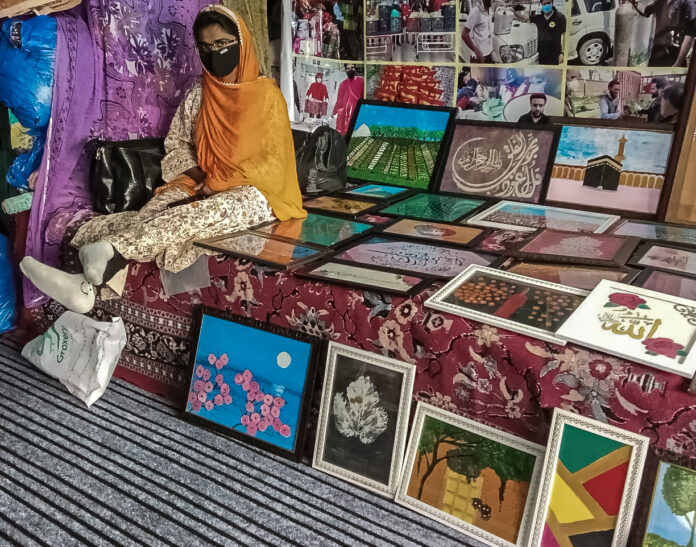Ilhak Tantray and Mohsin Mushtaq | Two Circles Network
There is a profound sense of melancholy in the dimly lit ward number six of Srinagar’s Shri Maharaja Hari Singh Hospital. The once-pristine walls have faded with time, much like the woman who lives here. Saima Noor, in her twenties, wears once-white clothes, now tinged with a ghostly grey. Her hands, handicapped by arthritis, grip a paintbrush firmly.
The canvas in front of her is a bright world, a tether to a reality she was once stolen from. She was abandoned as a child and adopted by a loving Kashmiri family who gave her a name that was not her own. Saima stares at the canvas, her eyes filled with longing and resilience.
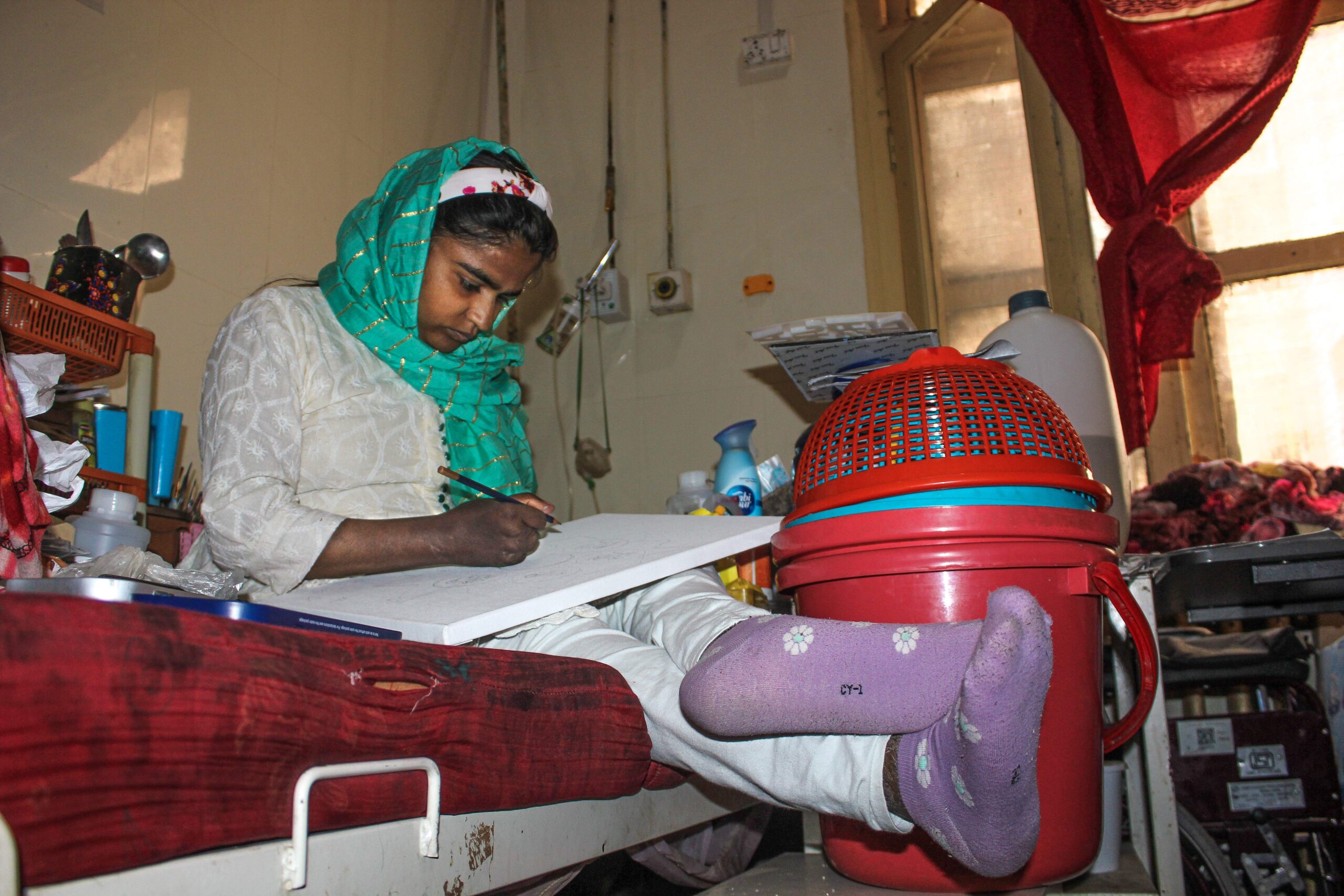
This room has become her sanctuary, a place where dawn breaks with the promise of artistic expression, and dusk descends with the unbearable pain that has become her constant companion. The juxtaposition of her fragile yet determined spirit against the backdrop of this room tells a story of resilience, loss, and the indomitable power of art to bridge the gaps in her life.
Abandoned at Six, Found a New Home in Kashmir
In her reminiscences, Noor, Saima vividly recounts the tumultuous chapter of her life, likening herself to a minuscule fish lost in the vast expanse of the ocean. “For an agonizing span of three days, I roamed the unfamiliar streets of Bangalore, utterly adrift and bereft of any knowledge regarding my mother’s whereabouts. It was a bewildering ordeal to endure at the tender age of six,” Saima reflects with a wistful gaze. “However, on the fourth day, an empathetic woman extended her compassionate hand, providing refuge and solace to the terrified child who bore no memory of her family or place of origin,” added Saima.
Saima was embraced by a Kashmiri family, who offered her not only safety but also the promise of a fresh beginning. “I gradually assimilated into this unfamiliar environment, acquiring their language and customs,” Saima continues with a poignant smile, “and, in time, I seamlessly became an integral part of their loving family.”
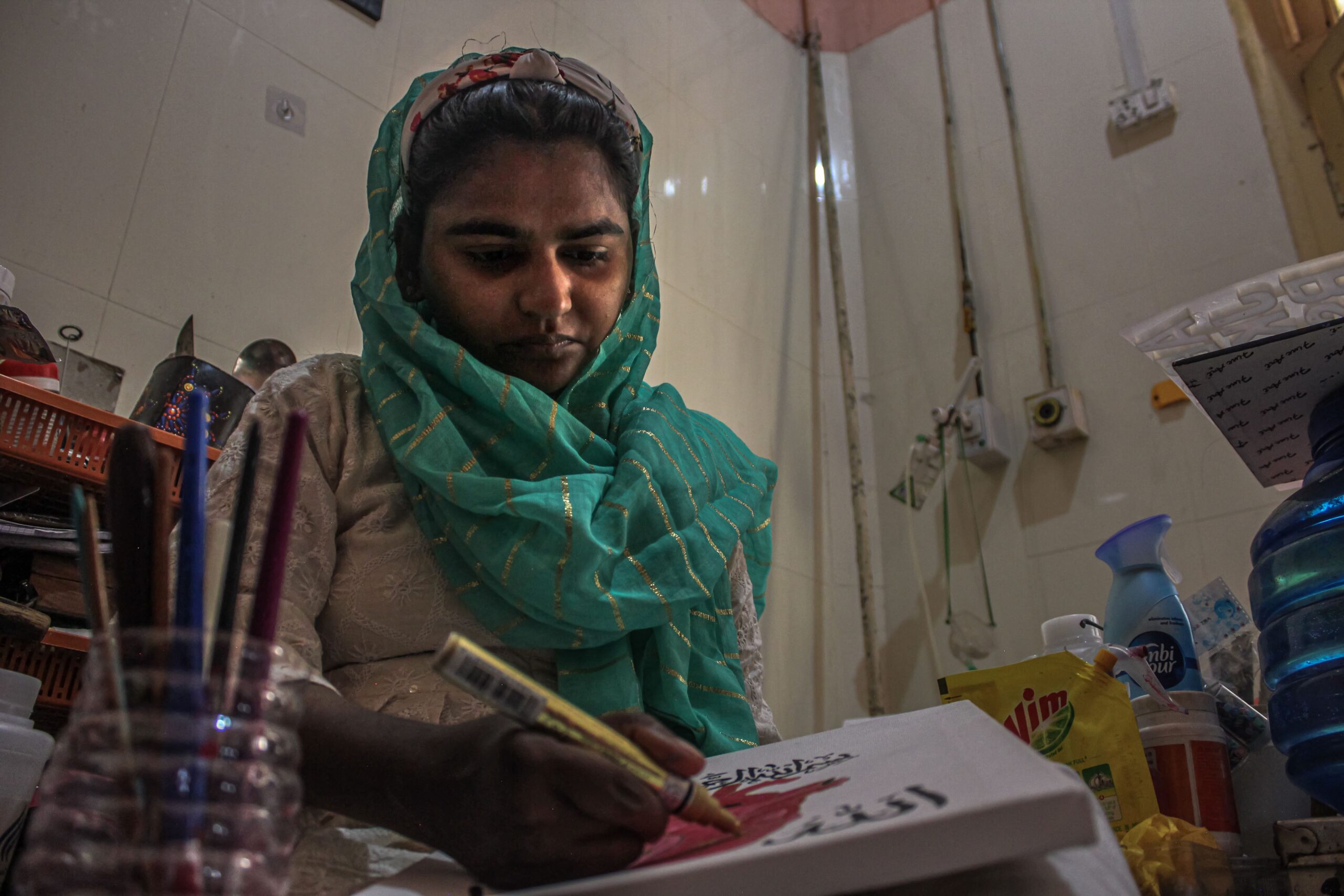
Arthritis Kicks In
Saima’s journey through life had been relatively smooth, marked by the gentle strokes of transition, until the year 2010. Before that, her hands had gracefully danced across the laptop screen, bringing to life the imagination of a child whose existence she was blissfully unaware of. Her body dutifully followed the script that life had thrust upon her.
However, in the fateful year of 2010, Saima’s life took an abrupt turn. It began with a subtle discomfort beneath her feet, a sensation she initially attributed to gout. In response, she conscientiously abandoned protein-rich nourishment in hopes of alleviating the discomfort.
Yet, the pain endured was unyielding in its persistence. Concerned for her well-being, her family sought the counsel of an orthopaedic specialist who, at first, diagnosed her affliction as mere knee pain. Prescribed medications briefly provided respite, only to be met with the unwelcome return of the agony.
By 2014, the pain had escalated to an agonizing crescendo, and medical experts proposed a drastic solution — a hip replacement surgery. Saima, with unwavering support from her new family, embarked on this challenging journey. The financial burden, totalling approximately 5 lakh rupees, was shouldered by them.
SMHS Hospital Becomes Saima’s New Home
Yet, the aftermath of the operation unveiled a harsh reality. Saima found herself stripped of her ability to engage in any form of labour. Her bones began to wither, rendering even the simplest act of walking an arduous endeavour. It was then that the family, committed to her well-being, offered her a sanctuary within an anteroom, where she could convalesce and confront the profound changes life had thrust upon her.
Saima recalls, “In April 2018, I thought this static life would kill me. I went to the SMHS hospital in Srinagar for treatment, and there I met Dr. Abdul Khaliq, a well-known rheumatologist. He is a great human being,” she told Two Circles.
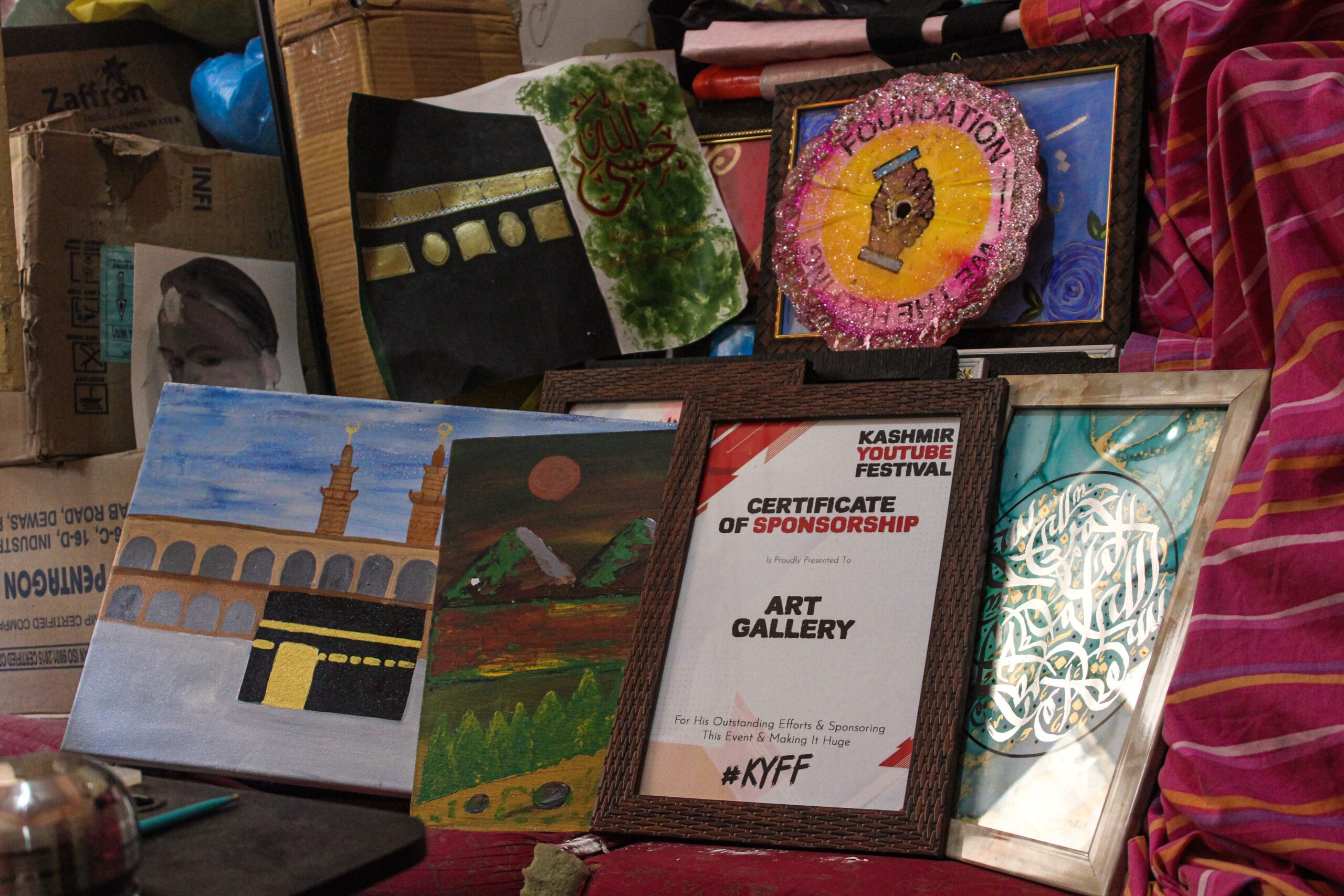
“Dr. Khaliq heard me and admitted me to Ward Six of the hospital. He treated me for some time and then realized that I shouldn’t remain away from the hospital. On his recommendation, I was allowed to have a room adjacent to Ward Six,” Saima adds.
After Dr. Khaliq’s retirement, the hospital administration asked Saima to leave, but other staff members intervened, stating that she had nowhere to go.
Saima Transforms Her Adversity into Art
During her stay at the hospital in 2019, one of the staff members motivated Saima towards drawing and gradually she started doing calligraphy. She hopes to find the occasional customer to support her livelihood. “The colours and strokes are my only companions. When I immerse myself in them, I become oblivious to the pain and the hospital’s commotion around me,” Saima murmurs as her hands guide the paint onto the canvas.
“People place orders, but often they don’t follow through with the purchase, leaving me with this room filled with hospital memories,” she laments.
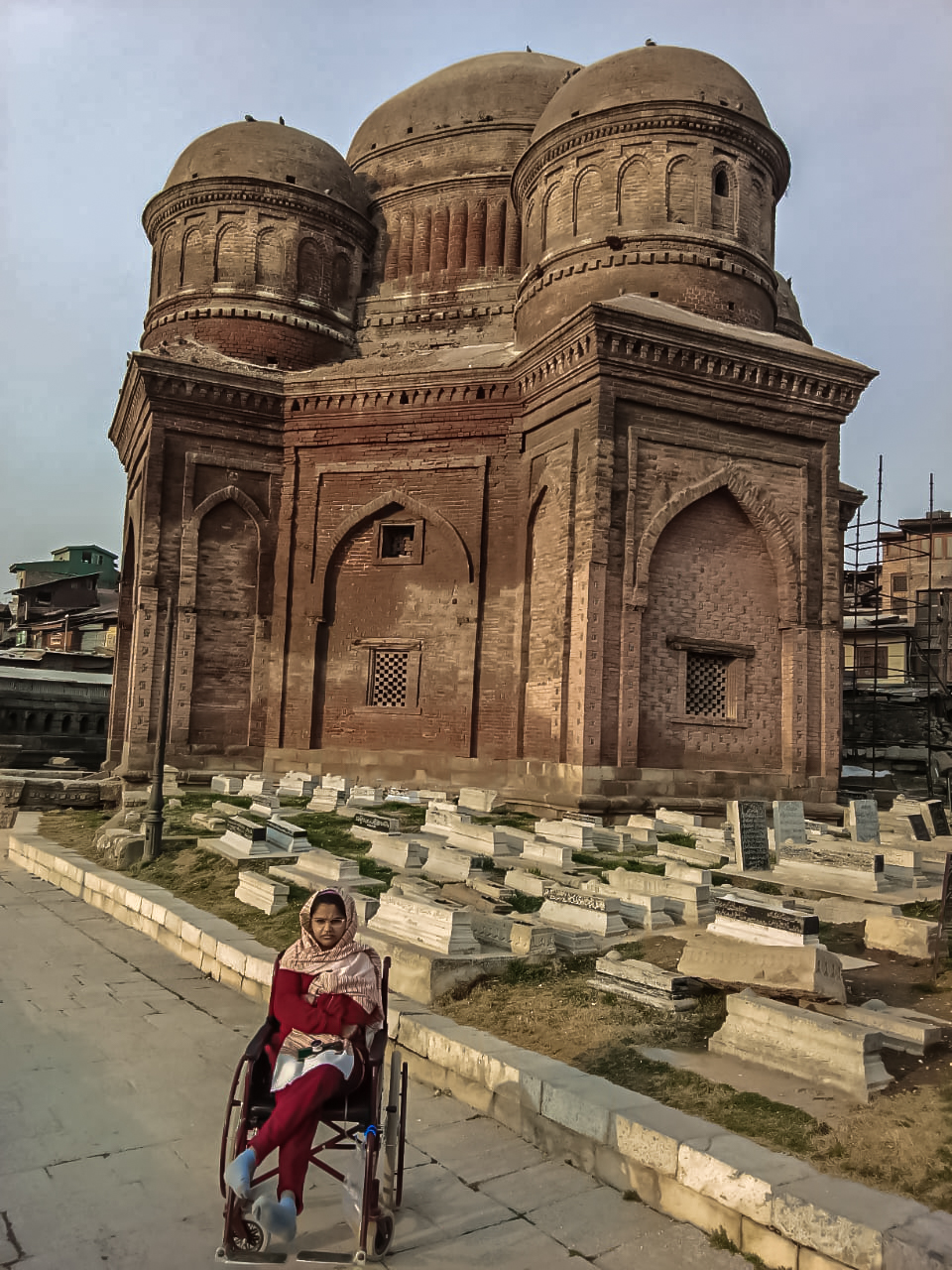
Despite challenging circumstances, Saima maintains a steadfast sense of hope regarding the generosity and hospitality of the Kashmiri people. She expresses her commitment, saying, “I am determined to remain in Kashmir, even if I am relocated from the hospital premises where I have limited privacy.
Saima remains optimistic that, through the Pradhan Mantri Awas Yojana (PMAY), a credit-linked subsidy scheme initiated by the Government of India to facilitate access to affordable housing for low and moderate-income citizens, she will be granted a residence that she can call her “home.”
Ilhak Tantray is a freelance journalist based in Srinagar. He tweets @ilu_tantray Mohsin Mushtaq is a freelance journalist based in Srinagar. He tweets @mohsinmushtaq73


